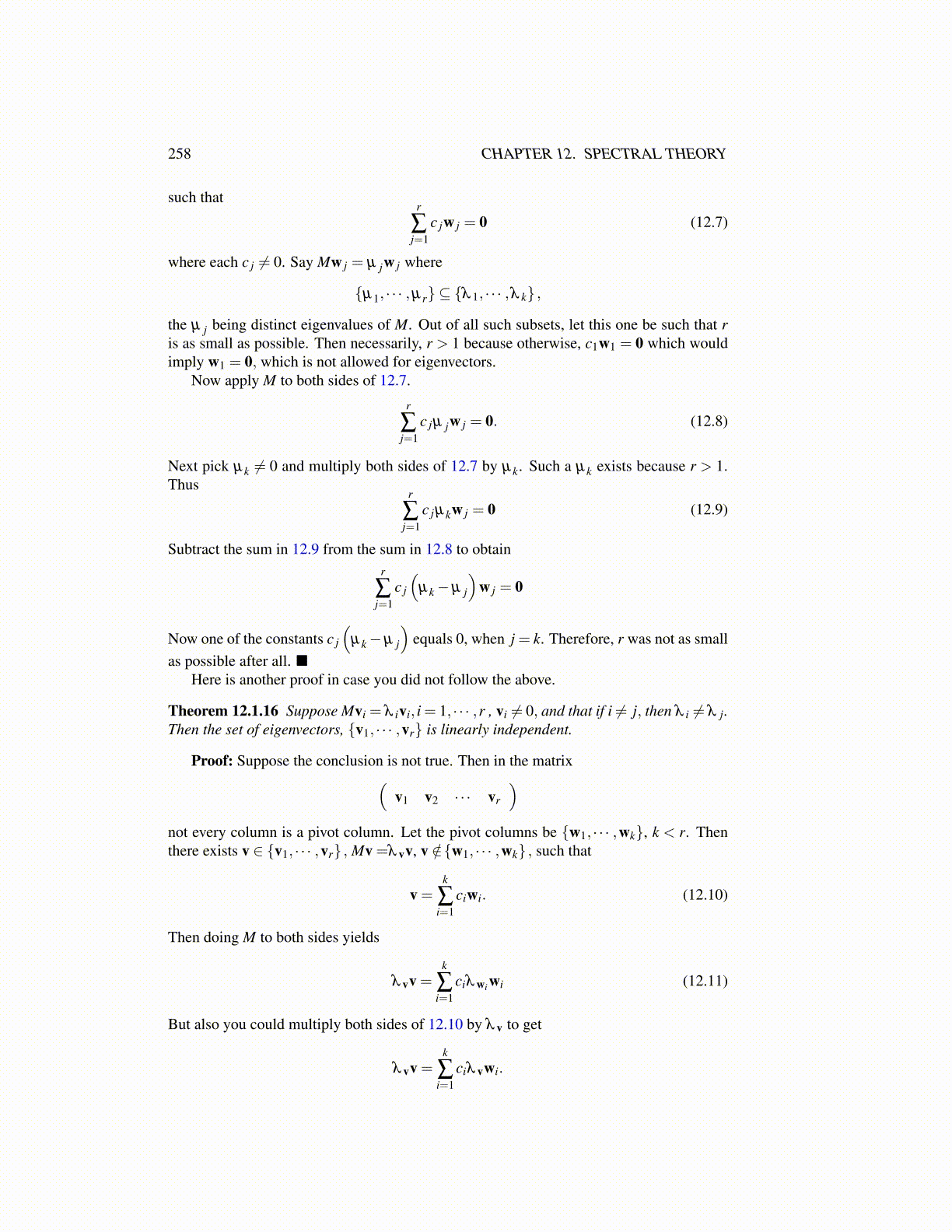
258 CHAPTER 12. SPECTRAL THEORY
such thatr
∑j=1
c jw j = 0 (12.7)
where each c j ̸= 0. Say Mw j = µ jw j where
{µ1, · · · ,µr} ⊆ {λ 1, · · · ,λ k} ,
the µ j being distinct eigenvalues of M. Out of all such subsets, let this one be such that ris as small as possible. Then necessarily, r > 1 because otherwise, c1w1 = 0 which wouldimply w1 = 0, which is not allowed for eigenvectors.
Now apply M to both sides of 12.7.
r
∑j=1
c jµ jw j = 0. (12.8)
Next pick µk ̸= 0 and multiply both sides of 12.7 by µk. Such a µk exists because r > 1.Thus
r
∑j=1
c jµkw j = 0 (12.9)
Subtract the sum in 12.9 from the sum in 12.8 to obtainr
∑j=1
c j
(µk−µ j
)w j = 0
Now one of the constants c j
(µk−µ j
)equals 0, when j = k. Therefore, r was not as small
as possible after all. ■Here is another proof in case you did not follow the above.
Theorem 12.1.16 Suppose Mvi = λ ivi, i = 1, · · · ,r , vi ̸= 0, and that if i ̸= j, then λ i ̸= λ j.Then the set of eigenvectors, {v1, · · · ,vr} is linearly independent.
Proof: Suppose the conclusion is not true. Then in the matrix(v1 v2 · · · vr
)not every column is a pivot column. Let the pivot columns be {w1, · · · ,wk}, k < r. Thenthere exists v ∈ {v1, · · · ,vr} , Mv =λ vv, v /∈{w1, · · · ,wk} , such that
v =k
∑i=1
ciwi. (12.10)
Then doing M to both sides yields
λ vv =k
∑i=1
ciλ wiwi (12.11)
But also you could multiply both sides of 12.10 by λ v to get
λ vv =k
∑i=1
ciλ vwi.